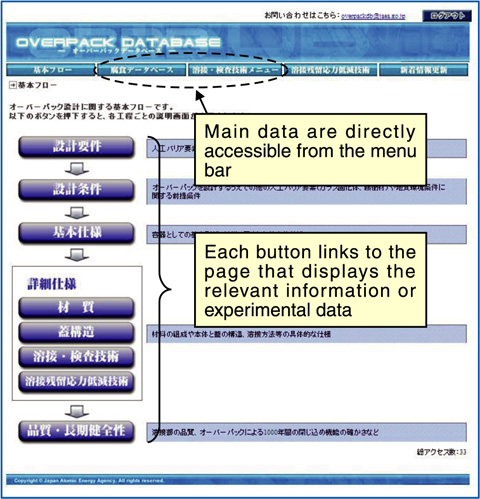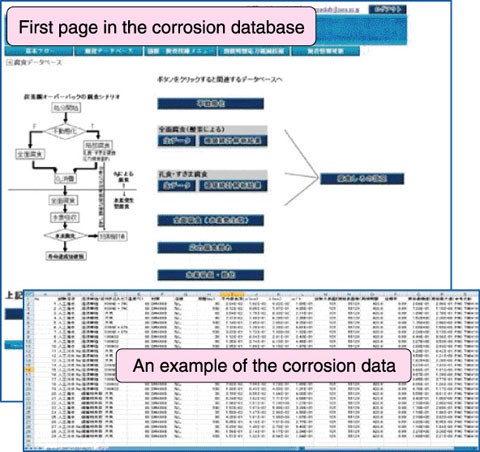
Fig.2-7 First page displayed after logging in to the database

Fig.2-8 An example of the corrosion database pages
An overpack is one of the components of an engineered barrier system for the geological disposal of high-level radioactive waste. The overpack is required to prevent groundwater from coming in contact with vitrified waste until the short-lived radionuclides decay (the time required for the decay is assumed to be 1000 years in the current concept). The required lifetime of overpack is far longer than those of ordinary industrial structures made of metallic materials. H ence, overpacks need to be specially designed, manufactured, and assessed for long-term integrity. Research and development of welding/inspection techniques for sealing the body and lid joint of the overpack and assessment of its corrosion resistance against groundwater are in progress at several institutes, and the results have been summarized as reports or research papers. These results should be used for overpack designing and establishing safety regulations that are suitable for the actual repository site conditions (groundwater chemistry, pressure, temperature, etc.). However, considerable effort and time are required to find the necessary information or data from the literature. In order to make practical use of the research results, we decided to construct a database system that enables users to efficiently find the information and experimental data. We have developed a database that integrates the data pertaining to the welding/inspection techniques and corrosion resistance and implemented it on the JAEA web site.
The database was developed in cooperation with the Radioactive Waste Management Funding and Research Center, where research and development of the welding/inspection technique was carried out.
In this database, a flow diagram of the overpack designing is shown on the main page (Fig.2-7). When a user clicks on t he button for the diagram, examples of previous investigations or experimental data (Fig.2-8) are displayed. The user can search for and refer to a variety of information about the overpack. The main test data, i.e., corrosion data and welding/inspection test data can be accessed directly from the menu bar without using the flow diagram. This database is publicly accessible. We are planning to expand and revise the database by incorporating the latest research results and technical information.